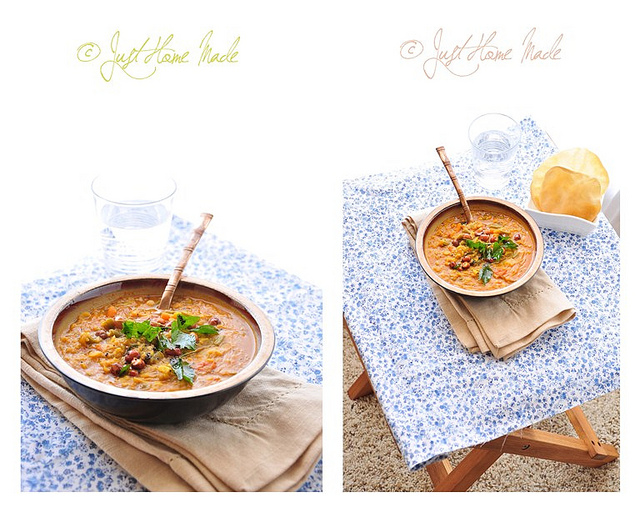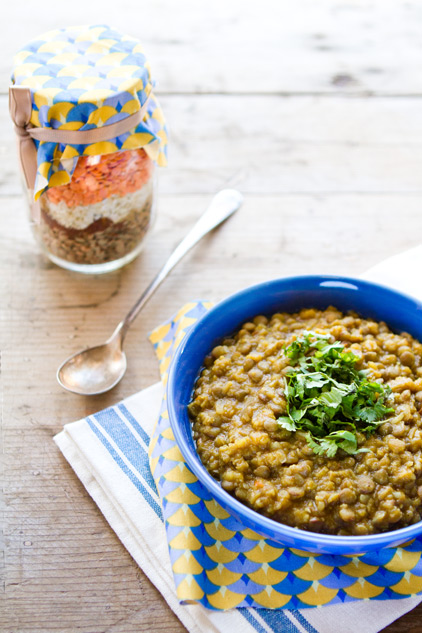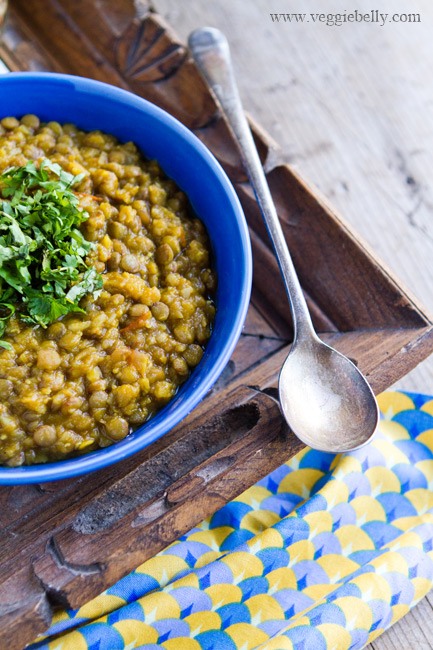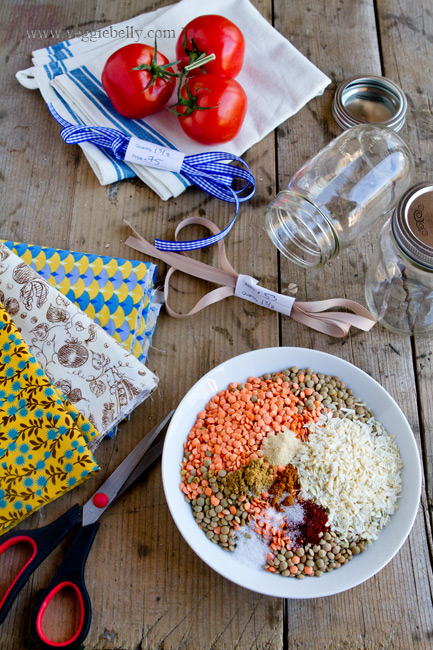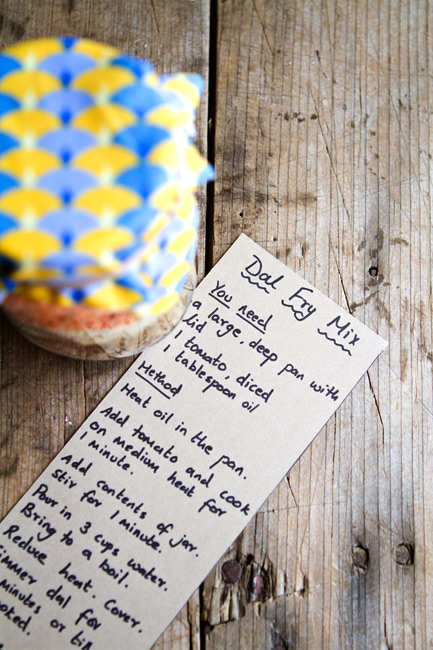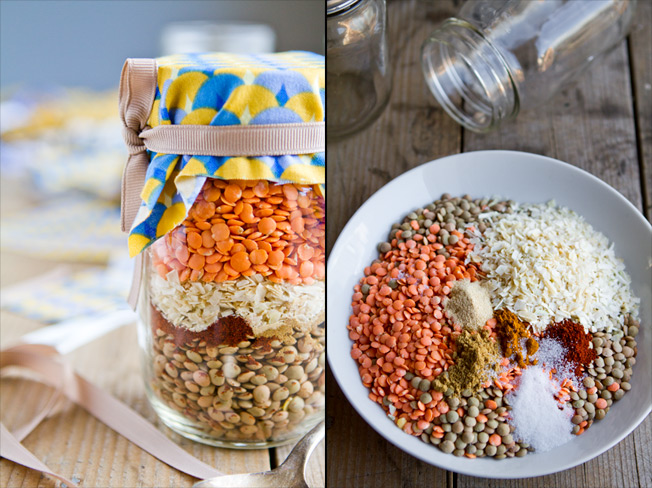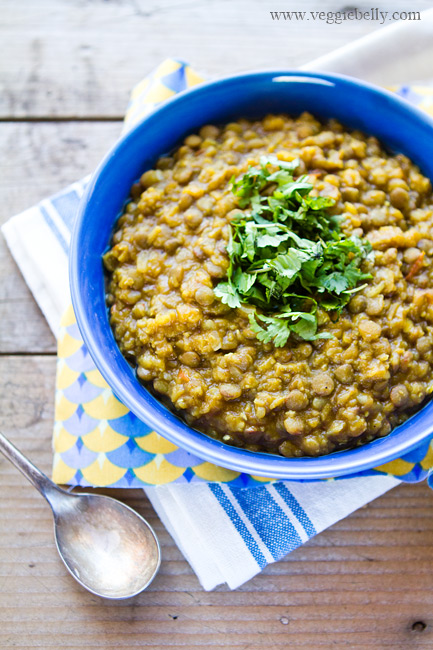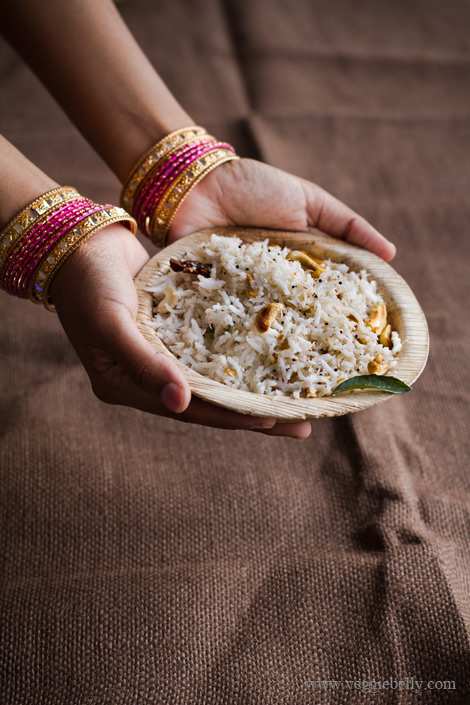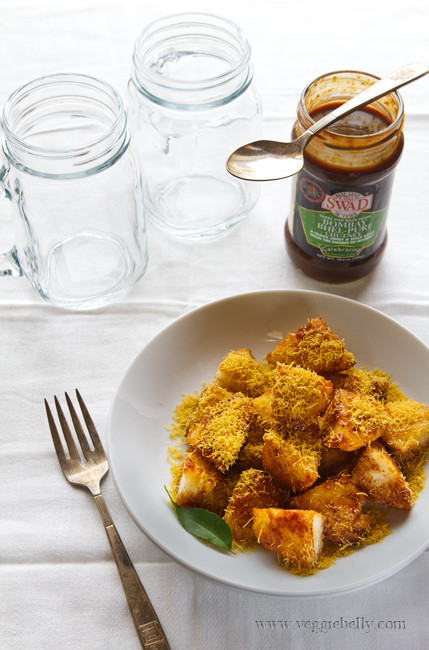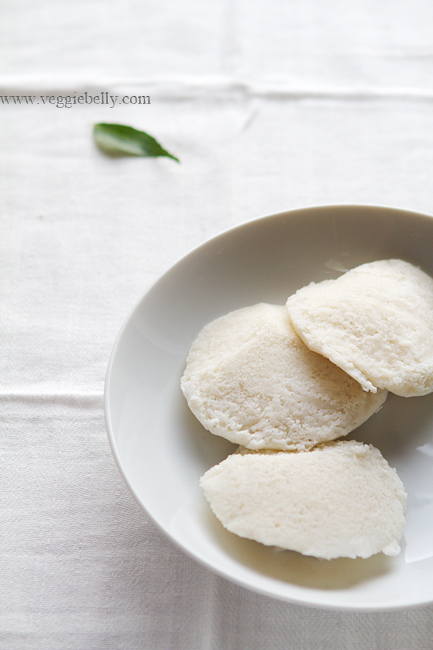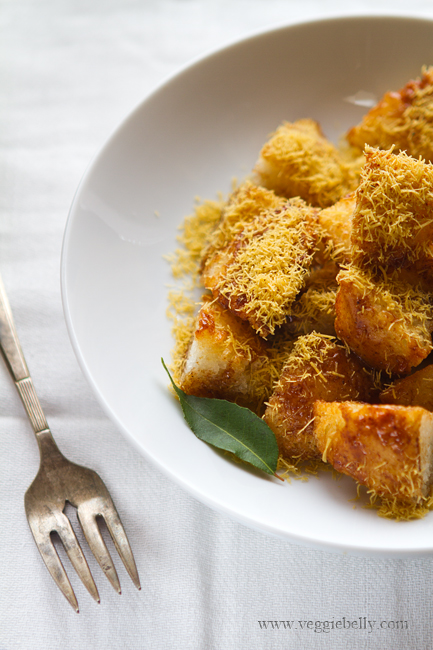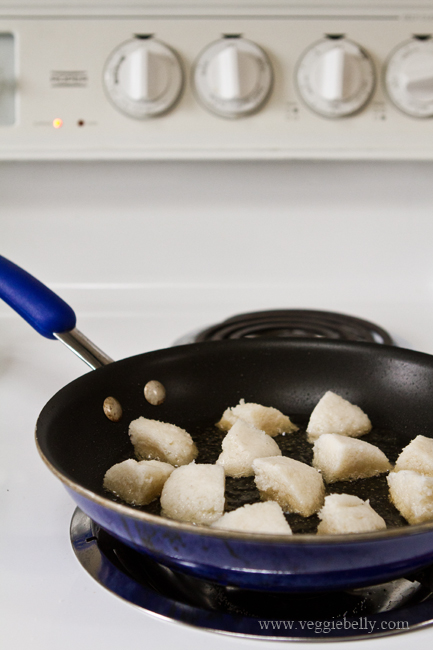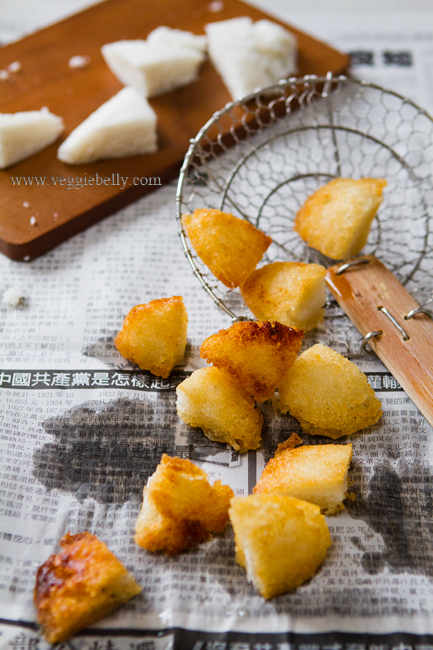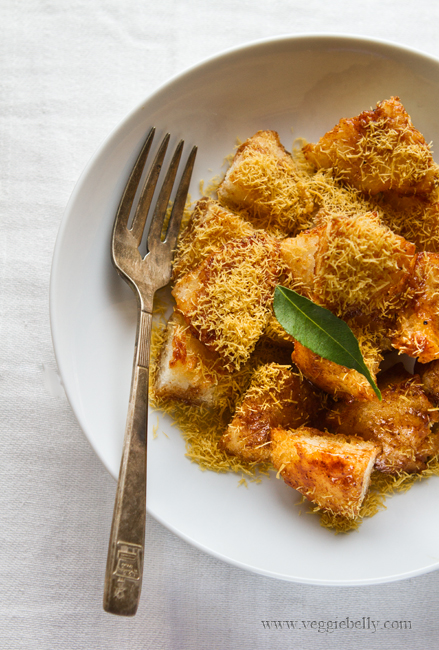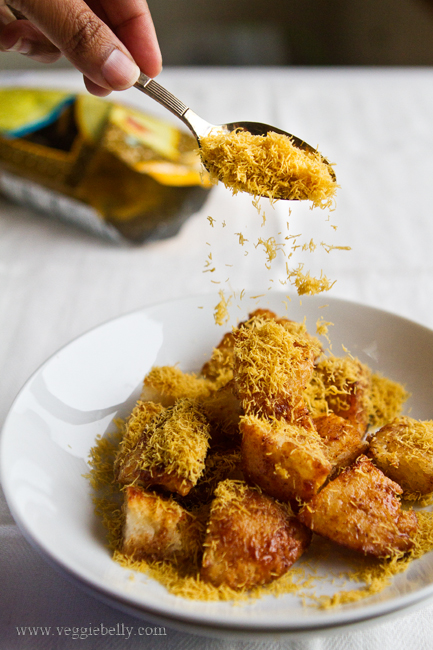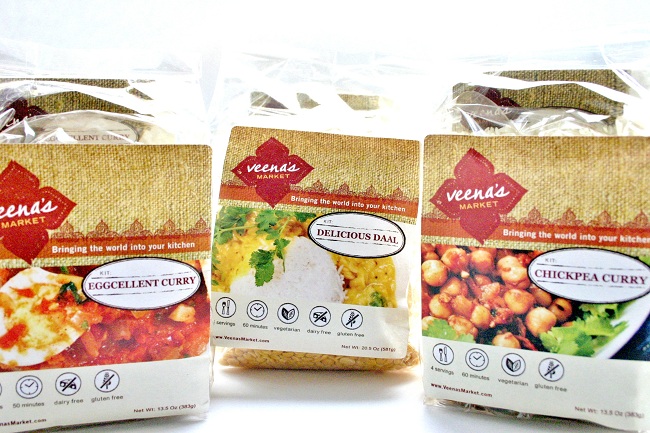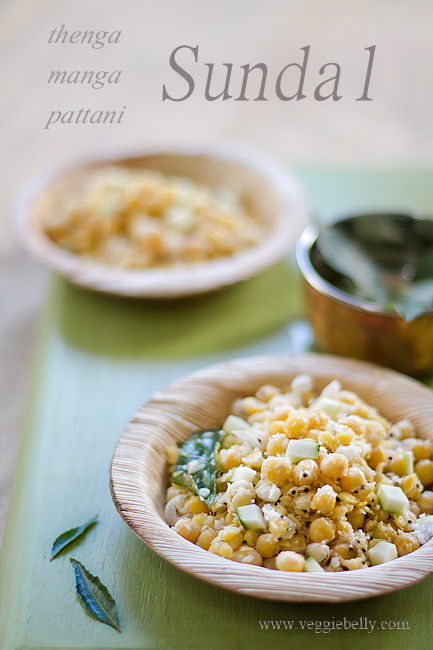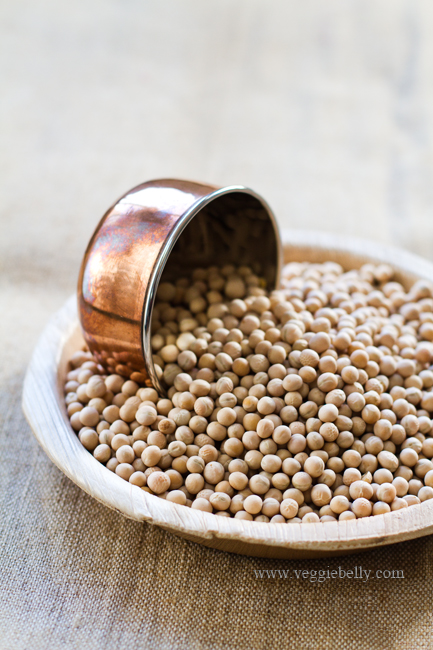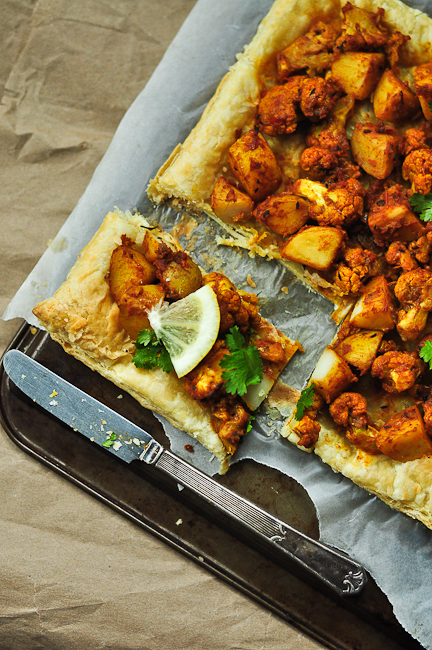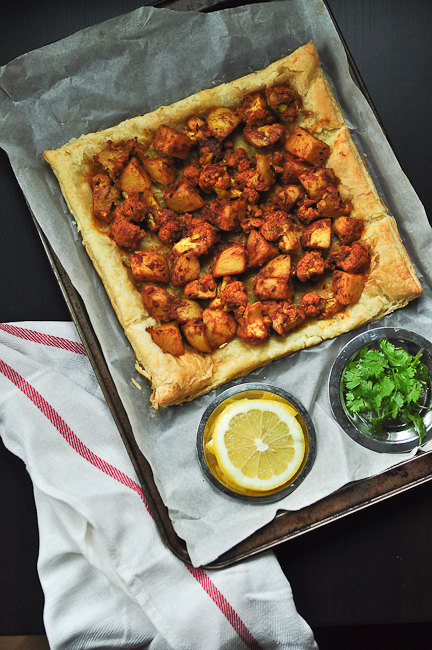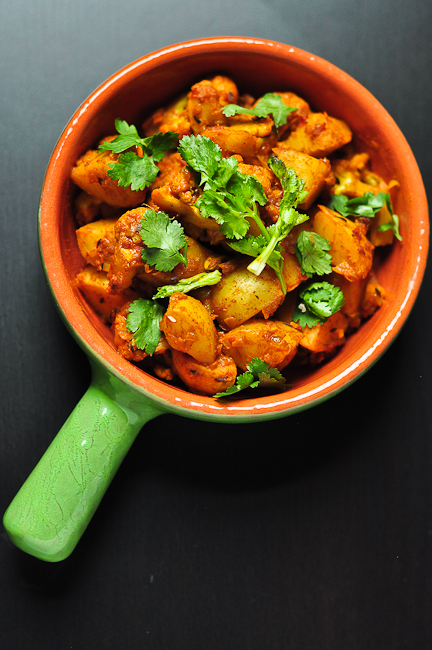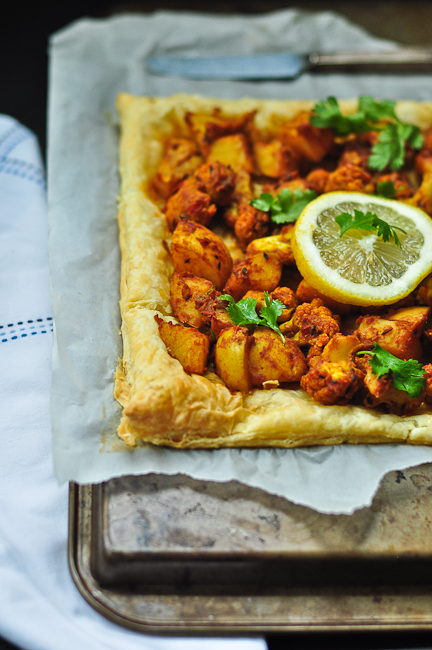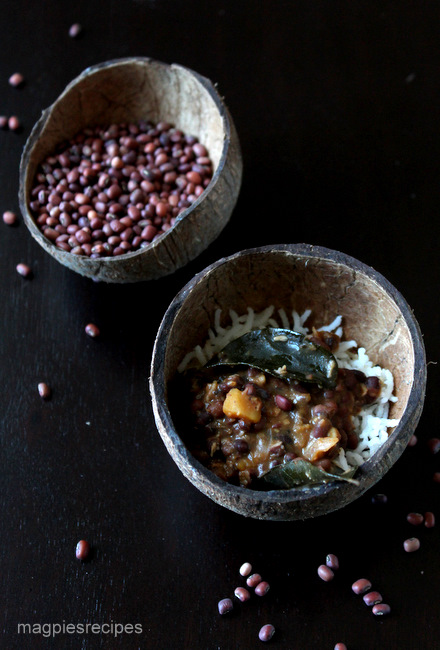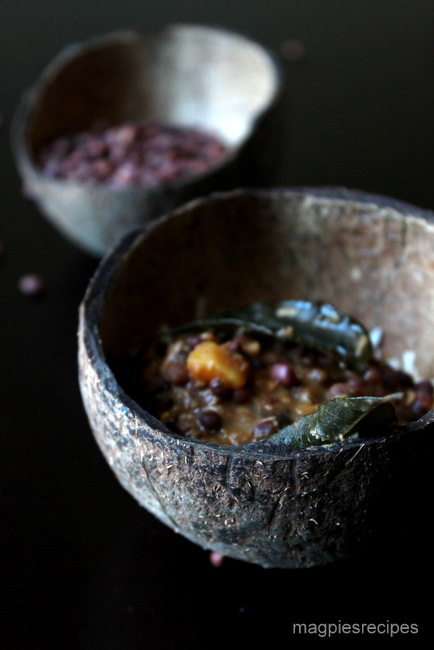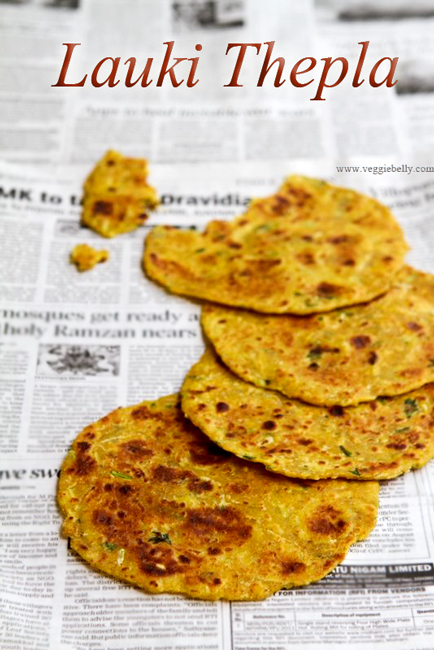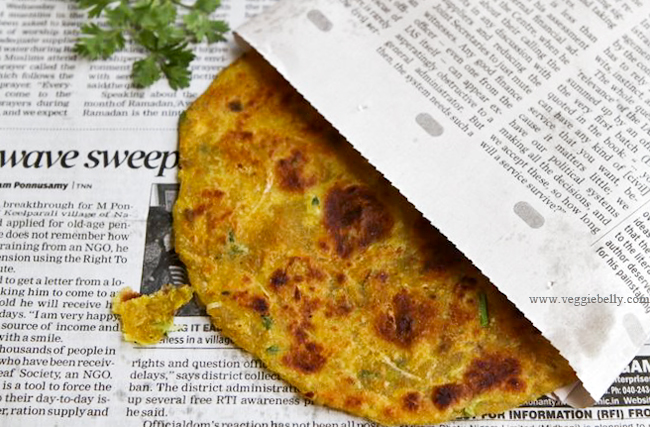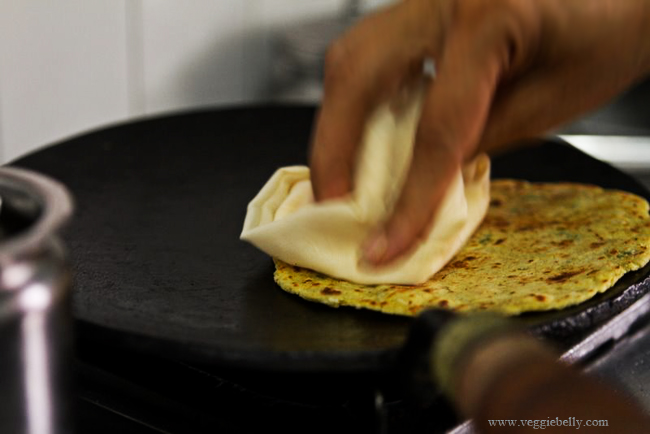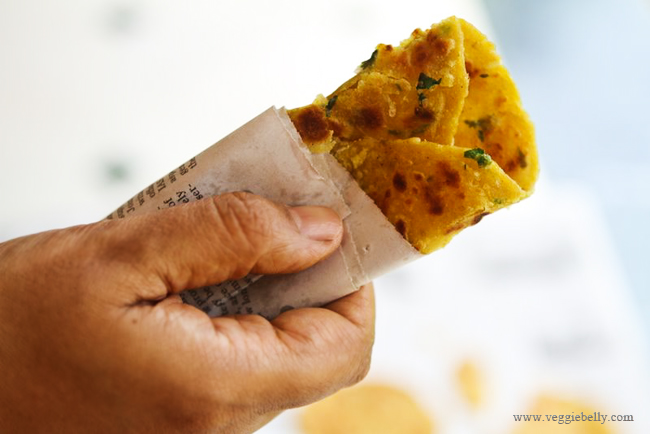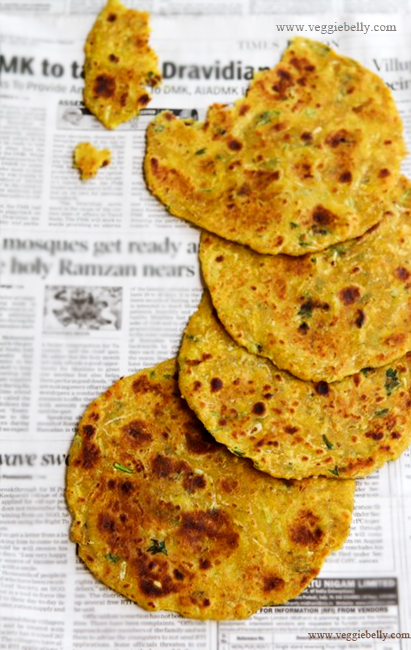I am driving cross country at the moment, and I’ve just seen Mt. Rushmore in South Dakota! As I trek across America, I am posting a series of essays about what I’m seeing, doing and eating. Read the first one here – A Vegetarian Road Trip Across America.
While I’m traveling, I’ve asked my friend Radhika to guest post today. I cant think of anyone more qualified than Radhika to share this Bisi Bele Bath recipe with you (one of my top 10 favorite Indian foods). Radhika is a brilliant cook, and her pictures are stunning. Make sure you check out her moutwatering creations on Just Home Made. Over to Radhika for her prized bisi bele bath recipe and a post full of tips, trick and clever shorcuts..
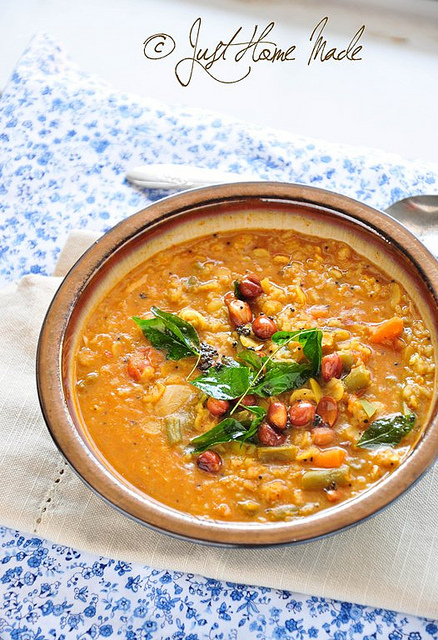
Guest posting for Sala has been on my mind for a while. When I learned of her cross country road trip and her need for guest posts, I jumped in to email my intentions. When she replied with a ‘Yes”, my joy knew no bounds…
Sala’s blog with perfectly lit beatiful photographs had me at the first look and I was hooked ever since. She has been a virtual guru to me right from my initial days of blogging even without her own knowledge. In fact, truth be told, the very first time I shot my DSLR camera in ‘Manual’ mode (for my Ghee post) was after I read her tutorial post on “How to take food photos with a bright, white, seamless background“
I am ecstatic and honored more than that to be guest posting for you, Sala.. In the words of revered saint and composer Sri Purandara Dasa’s ”Kereya neeranu kerege chelli” (kannada) which translates to “Spilling the pond water to the pond”, I dedicate this post to you..
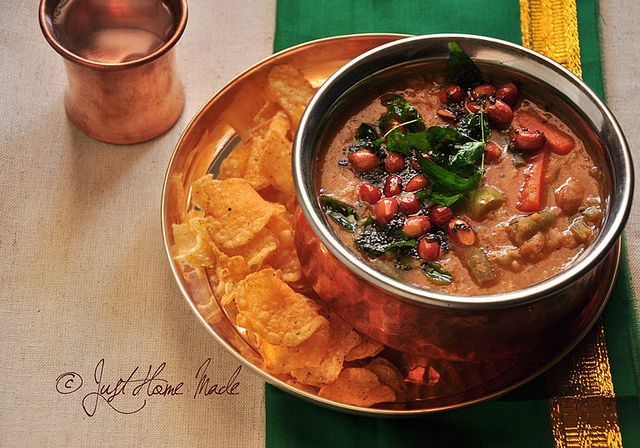
I couldn’t have suggested a better dish for this guest post than Bisi Bele Bath recipe. Until she responded with “I Love Bisi Bele Bath, I’d kill to get the recipe!”, I had no clue she likes it that much. What more do I say than Bisi Bele Bath it is?
Don’t ask me. But if you do, (we) Kannadigas take pride in our Bisi Bele Bath (also spelled bisi bele baath, bisi bele bhath, bisi bele bhaath) recipes which we undoubtedly consider as the queen of one pot meals. As with any authentic recipe, the perfect Bisi Bele Bath is quite elusive to many.
The recipe I am sharing with you here is the answer to my own quest for the perfect Bisi Bele Bath with an intoxicating aroma and a lip smacking taste after a lot of trials and nips and tucks to a number of recipes combined into one. Be prepared to lick your fingers!
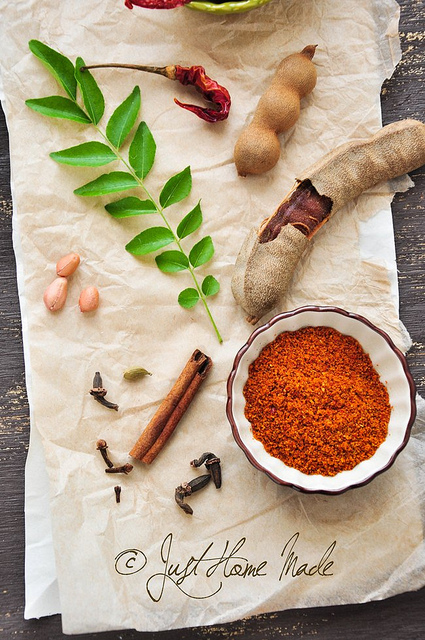
Even though the ingredient list seems long, fear not – I promise you, a tiny bit of kitchen slavery will be well worth its value in gold when this trademark signature dish of Karnataka is done..
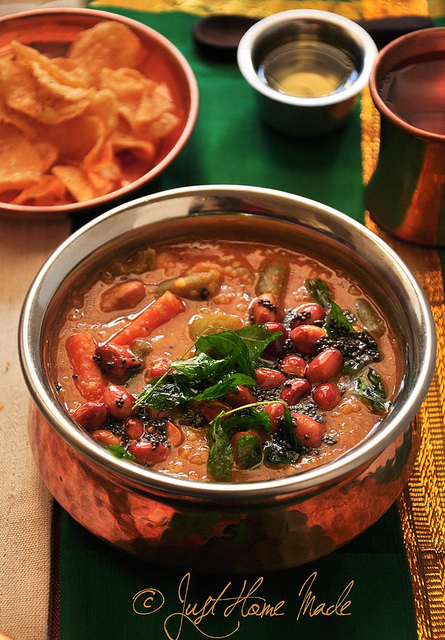
Did you know?
Byadagi Chilli is named after the town Byadagi in Haveri district of North Karnataka. Guntur is named after the city Guntur in Andhra Pradesh. Notice how both these red chillies come from places that have hot climates averaging at least 40° C ? (about 104°F)
Mace and Nutmeg come from the same tree; nutmeg is the seed of the tree whereas mace is the delicate lacey outer orange-red covering of the seed.
Marathi Moggu (meaning bud in kannada) comes from the buds of silk cotton tree? Wonder why it is named after Marathi though?
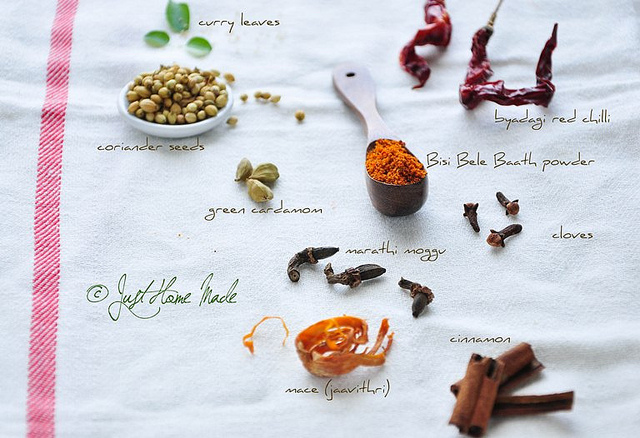
What you won’t find in the authentic version
- Aromatic/Basmati rice - Like I have said for Pongal, stick to non-sticky short grain rice. Unlike Pulao or Biryani, we do not want rice to take center stage, but rather blend in with the lentils.
- Veggies like brinjal, okra or radish – Feel free to add any veggie of your choice. If in the name of Bisi Bele Baath, you get to incorporate different veggies into your food I’d gladly say yes. But, when you make it for a guest or a friend, stick to the list to preserve authenticity.
- Cumin seeds in the seasoning
- Cilantro
- Onion
- Ginger/garlic
Notes:
- Byadagi red chillies aren’t available in all the Indian grocery stores. Substitute for Byadagi – any high on color and mild in heat variety will do. For Guntur- any high on heat (usually low on color) variety will do.
- For larger quantities, remember lentil : rice - 1.5 : 1 and rice to water ratio of 1: 4 or 5
- Mace (Javithri) much like cloves is best appreciated in small quantities. Use it more and it can overpower the aroma and taste of the spice mix
- Some like to add potatoes. But, I’d rather not as potatoes tend to absorb all the spices, neutralize them and impart their raw earthy taste.
- If you want to skip making the spice mix from scratch or don’t have the ingredients, store-bought MTR Bisi Bele Baath powder is good enough for instant gratification.
- Marathi Moggu (Kapok Buds) are not available even in Indian grocery stores where I live, so I brought a small stash on my India visit. However, I recently found that they are sold online.
- Before peeling Chayote squash, slice of the ends; rub the cut open end with the chopped slice until the white froth ceases. This takes away the bitterness, if any.
- Store leftover Bisi Bele Baath mix in an airtight container either in the refrigerator or in the freezer to keep the aroma fresh.
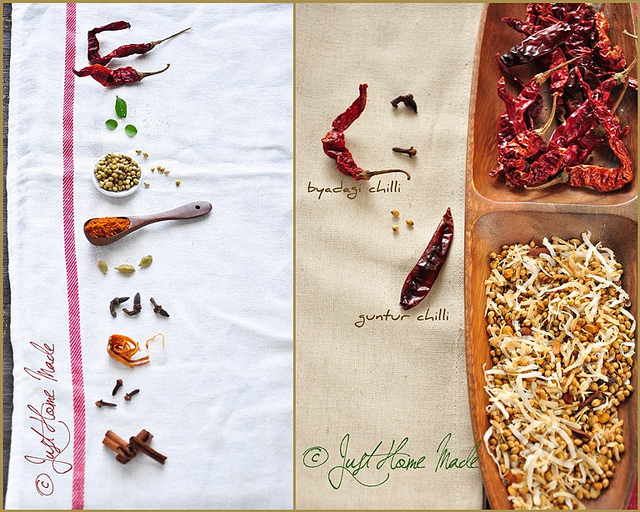
Bisi Bele Bath Recipe
served about 4
Ingredients
1/2 cup Rice (sona masoori or any short grain rice)
3/4 cup Pigeon Peas (Toor Dal)
1/4 tsp turmeric
1/2 large Chayote Squash or Kohlrabi (Knol kohl) peeled, small diced
1 large Carrot, peeled, cut into 2″ long, 1 cm thick pieces
handful Green Beans, ends removed and broken into 1″ pieces
1/2 cup Double beans or Butter beans or green peas or a mix
1/2 large Green Bell Pepper (Capsicum), seeds removed and small diced
1 small tomato, diced
lemon sized seedless tamarind (adjust as per taste)
1-2 tsp Rasam powder* home made or store-bought
3 tbsp Bisi Bele Bath powder (recipe follows)
2 tbsp grated dry coconut (copra) or desiccated coconut
4 tsp peanut oil
salt
Ingredients for seasoning
2 tbsp Ghee or peanut oil or a mix of both
1/2 tsp black mustard seeds
1/8 tsp asafoetida or hing
1/4 cup peanuts or cashews
4 curry leaf stalks
Ingredients for the Bisi Bele Bath Powder
12 Dried red chillies – Byadagi
4 Dried red chillies – Guntur
2 tbsp Coriander seeds (dhania)
1-1/2 tsp bengal gram (chana dal)
1 tsp black gram (urad dal)
3 kapok buds (marathi moggu)
2 cloves (lavang)
1″ piece cinnamon (chakke)
2 green cardamom (elakki)
1/2 ” piece – mace / javitri / jai patre
1/4 tsp fenugreek seeds
1/4 tsp white poppy seeds (gasa gase or khus khus)
2 tbsp grated dry coconut (copra) /desiccated coconut
*optional: If you dont want to use rasam powder as listed above, dry roast these as well:
1/2 tsp cumin seeds
1/4 tsp mustard seeds
1/4 tsp whole black pepper
3-4 curry leaves
Method
Wash and soak tamarind in warm water for 10-15 mins. Skip this if using tamarind concentrate.
Wash rice well until water runs clear, drain and let soak for 10-15 mins. Soaking ensures rice to be cooked soft. When soaked, wash lentils until water runs clear. Cook lentils with turmeric and double the amount of water and rice with 2.5 times water in the pressure cooker for 3 whistles. Put lentils in lowest container. Alternately, cook lentils and rice on stove top separately until well cooked.
Meanwhile cook cut vegetables covered in a medium pot with just enough water. Add salt mid way and switch off when the vegetables are almost cooked but hold their shape well.
Squish soaked tamarind (if using) to a pulp. Discard leftover seeds and fiber.
While veggies, rice and lentil cook, in a kadai / thick bottomed skillet over medium heat, dry roast all the ingredients listed for the Bisi Bele Baath spice mix except fenugreek, poppy seeds and dry coconut, until fragrant and lentils turn golden brown. Remove onto a plate. Reduce the heat to low and dry roast fenugreek seeds and poppy seeds until fenugreek seeds turn golden brown. This will happen fast, so pay attention. Pour onto the plate with the other roasted ingredients. Switch off and dry roast dry coconut in the retained heat of the skillet until golden brown. If you are not using Rasam powder as listed above, optionally dry roast mustard, cumin and black pepper until mustard and cumin crackle and curry leaves crisp up. Remove onto the same plate and let cool. When roasted ingredients are cooled, grind them to a powder in a coffee grinder or a mixer and set aside. Do not open the lid, to keep the fresh aroma of the ground spices intact.
When cooker has cooled, whisk through the cooked lentils to mash well.
Heat oil in a heavy bottom pot and sauté diced green bell pepper. Add salt, diced tomato, stir and cook covered until bell pepper is cooked. Add the cooked vegetables along with the water, mashed lentils, rasam powder, salt, tamarind pulp and bring to a boil. Add rice to this and keep stirring to make sure it doesn’t burn at the bottom. Add more warm water to adjust the consistency if required.
Now add the freshly ground Bisi Bele Bath mix, stir well to break any lumps and simmer for 5-10 minutes. Check for taste and adjust tamarind, salt and spice mix. Switch off, sprinkle dry coconut on top and keep aside. Store the remaining Bisi Bele Bath mix in an airtight container.
For the tempering (seasoning), heat ghee/oil in a small kadai or saucepan over high heat. When the oil is hot enough, add mustard seeds. When they splutter, reduce heat to medium, add peanuts and stir until they crackle and turn a light brown. Now add asafoetida (hing) and curry leaves and sauté until curry leaves are crumbly crisp. Pour the tempering over on the piping hot Bisi Bele Bath, cover immediately to preserve the aroma and keep aside.
Serve hot drizzled with ghee and potato chips or Khara boondi on the side. Bisi Bele Bath tastes even better after several hours of making, which makes it a good candidate for a make-ahead meal.
Bisi Bele Baath shortcut method
Heat oil/ghee in the pressure cooker over medium-high heat and follow seasoning steps. Strain the peanuts and curry leaves and keep aside. To the seasoning, add diced bell pepper and turmeric and sauté for a bit. Add the remaining veggies and sauté, add diced tomato, salt, washed lentils, washed rice and stir well until rice turns opaque. Add tamarind pulp, rasam mix, Bisi Bele Baath mix, 5 cups of water and give it a good stir. Shut the cooker closed and cook for 2 whistles. When cooker cools, serve hot Bisi Bele baath with the fried peanuts and curry leaves. The only downside to this is some of the aroma is lost in the pressure cooking.
